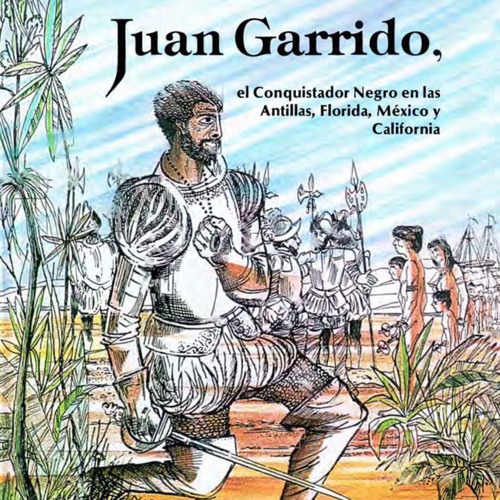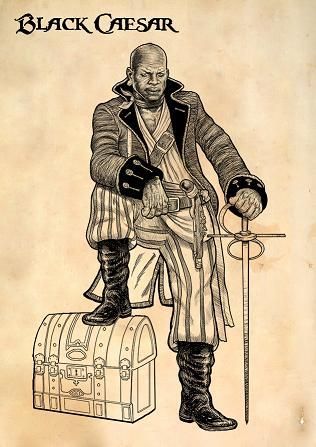Spencer McClure

“I, Juan Garrido, black resident of this city, appear before Your Mercy and state that I am in need of making a probanza to the perpetuity of the king, a report on how I served Your Majesty in the conquest and pacification of this New Spain… I was present at all the invasions and conquests and pacifications which were carried out, always with the said Marques, all of which I did at my own expense without being given salary or allotment of natives or anything else… in all these ways for thirty years have I served and continue to serve Your Majesty – for these reasons stated above do I petition Your Mercy. And also because I was the first to have the inspiration to sow maize here in New Spain and to see if it took: I did this and experimented at my own expense.” -Juan Garrido
Why do famous black conquistadors such as Juan Garrido have to ask for mercy after the impact he helped create? Have you heard of black conquistadors and what they accomplished? Do you understand the impact people of African descent had on Spanish conquests in the New World? When thinking about the 16th-century Spanish conquest in the Americas, they only consider two groups of people, white Spaniards, and Native Americans. Historical figures such as Christopher Columbus, Hernan Cortes, and others are widely recognized as significant and successful explorers because of their names and connections to higher-up authority in Spain. The roles of these Spanish explorers have been historically exaggerated, while the roles of Africans and black conquistadors were greatly underappreciated and unknown.
Voluntary Expeditionaries and Involuntary Colonists
During the conquest, people of African descent generally fit into these three groups: mass slaves, unarmed servants of the Spaniards, and armed auxiliaries. Many of the people of African descent viewed their voyage to the New World as an opportunity to improve their social and economic well-being. These Africans were likely taken from West Africa as slaves and used as laborers on large plantations to gather and produce raw materials. According to historian Mathew Restall, slaves were “shipped en masse to the colonies and forced to work in labor gangs in various industries but most typically on sugar plantations”. The second category was populated by black conquistadors or armed auxiliaries[1]. These were likely African men, originally a slave, who ultimately could earn their freedom back. Or they were people whose ancestors were brought as slaves to Iberia Peninsula (Spain and Portugal) but were born free. Historian Ira Berlin called this group of black intermediaries Atlantic Creoles. These men fought side by side with the Spaniards and Portuguese on their conquests of the southern U.S, the Caribbean, South America, and New Spain. As an award for their commitment and loyalty, many black conquistadors got land grants and special recognition.

Black Conquistadors
Spanish conquest started in the late 1400s and early 1500s where they traveled over the Atlantic to find new lands and opportunities. This gave Africans, whether they came voluntarily or involuntarily, a chance to create a better life for themselves and their family. There were many influential black conquistadors during this time, but many did not receive the recognition that some did, although it should have been warranted.
Two well-known black conquistadors are Juan Garrido and Juan Valiente. They shared similar journeys to how they got to where they were. Garrido and Valiente, like other Africans during this time were born in West Africa, where they were later enslaved. Juan Garrido’s journey started when he was taken from Africa to Spain as a slave, but how he became free is unclear. He later voluntarily signed on to travel to the New World with Juan Ponce de Leon. Afterward, his life soon became a thirty-year expedition of exploring, fighting, and looting alongside the Spaniards. After his conquests, he and his family earned their freedom and settled down in Mexico, where he earned his encomienda and was able to make a living for himself. Juan Valiente had a slightly different story. He was purchased by Alonso Valiente, who settled down in Mexico City and became his servant. Later, Valiente signed a contract with his owner allowing him to participate as a conquistador in exchange for profits shared with his owner. He used his share of profits to purchase his freedom later. After twenty years of conquest with conquistadors such as Pedro de Alvarado and Diego de Almagro, Valiente married a former slave of a governor in Chile and was granted his encomienda. Garrido and Valiente may have had better treatment than other Africans who came to the New World, but they still were not treated equaly to white conquistadors.
Although Garrido and Valiente may be the most well-known black conquistadors, many others played a vital role in discovering the New World. Despite their loyalty and influence, many free black conquistadors lived a similar life to what they had before the conquests. Out of the Africans who aided in the Spanish conquest, only five received encomiendas. The person granted the encomienda, or encomendero, has the right to enslave, colonize land, and force the labor of the natives of that particular land. This disparity in encomienda grants shows how Spanish authorities make distinctions between white and black conquistadors.
Impact of Caste Systems and Black Counter Conquistadors
The expansion of Spanish territory extended far and wide through the New World, but one of the most influential places was New Spain. When the Spanish first arrived, white Spaniards came and conquered, but thousands of Africans arrived. As a result, many political administrators and intellectuals were concerned about managing this population of Africans and natives. They wanted to ensure that their privileged white status was superior to the other populations. Owners felt they needed to apply force to control their slaves as the African population mixed with indigenous and white people[2]. This concern led to creating a caste system (sistema de castas). This system resulted from indigenous and African exploitation and enslavement and ultimately helped legitimize the ideology of racism in colonial Mexico.
Some Africans attempted to gain social mobility and wealth by challenging the social hierarchies of conquest. These “black-counter conquistadors” did not comply with the societal norms of how blacks, free or enslaved, were less than the white Spaniards. Regardless of their location, these blacks shared an emotional bond with their homeland and culture. As Kimberly Cheeks argues, “‘cross-caste’ affinities” among free and enslaved blacks “bound individuals together through ‘nonbiological affective ties’” [3]. These counter conquistadors sometimes gathered in groups to resist their assigned roles. Armed resistance took several forms, whether they were individual acts of armed revolt or violent resistance. Ultimately these blacks would create communities and societies where they fought to carve a space of their own, in some cases violently, fleeing, or by wanting a place to settle. Fugitive slaves in the Caribbean and other regions in the Americas would gather and resort to piracy. Many thought this was an easy choice between perpetual slavery and freedom through lawlessness[4]. It is estimated that a third of pirates during this time were former slaves. One of the most famous “black-counter conquistadors” was Black Caesar, who led a lifetime of amassing a considerable fortune by posing as shipwrecked sailors and violently robbing European vessels that assisted them. These pirates challenged the institution of slavery while creating a unique culture during the Spanish conquest in the Americas.

Many people argue that white Spanish conquistadors were not the most influential individuals of the Spanish conquest. Many successful military operations were not made by Europeans conquistadors. but by indigenous allies of these black conquistadors, their African counterparts. [5] Ultimately, the depiction of the Spanish conquests as only conflicts between white Europeans and the native “red Indians” should be dismissed as a myth. Black conquistadors also played a crucial role in the history and formation of New Spain and other regions of Latin America.
[1] Restall, Matthew. “Black Conquistadors: Armed Africans in Early Spanish America.” The Americas 57, no. 2 (2000): 171-205.
[2] Vinson, Ben. “Fading from Memory: Historiographical Reflections on The Afro-Mexican Presence.” The Review of Black Political Economy 33, no.1 (2005): 59-72.
[3] Sierra Silva, Pablo Miguel. 2015. “From Chains to Chiles: An Elite Afro-Indigenous Couple in Colonial Mexico, 1641-1688.” Ethnohistory 62 (2): 361–84.
[4] Cheek, Kimberly. “Black Caesar.” African American Studies Center, 2015. https://doi.org/10.1093/acref/9780195301731.013.39700.
[5] Restall, Matthew. Seven Myths of the Spanish Conquest. Oxford University Press, 2003.
Photos
Alegria, Ricardo E. Picture of Juan Garrido. n.d. Amazon. https://www.amazon.com/Garrido-Conquistador-Antillas-California-1503-1540/dp/B000MBRRZ8.
Black Caesar. n.d. Daily Kos. https://www.dailykos.com/stories/2020/4/17/1922904/-Black-Kos-Week-In-Review-Black-Caesar-The-Real-Pirate-Of-The-Caribbean.
Map of Routes. n.d. Mr. Belmonte’s Conquistador Project. https://sites.google.com/site/belmonteconquistadorproject/.